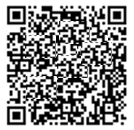[1] CHIN KL, ANIBARRO L, SARMIENTO ME, et al.Challenges and the Way forward in Diagnosis and Treatment of Tuberculosis Infection[J]. Trop Med Infect Dis, 2023, 8(2):89.
[2] WORLD HEALTH ORGANIZATION.Tuberculosis.Geneva: World Health Organization. 2023.
[3] 卢春容,谭卫国,陆普选,等. 2023年WHO全球结核病报告:全球与中国关键数据分析[J/CD]. 新发传染病电子杂志 2023, 8(6):73-78.
[4] DHEDA K, MIRZAYEV F, CIRILLO DM, et al.Multidrug-resistant tuberculosis[J]. Nat Rev Dis Primers, 2024, 10(1):22.
[5] 宋敏,陆普选,方伟军,等. 2022年WHO全球结核病报告:全球与中国关键数据分析[J/CD]. 新发传染病电子杂志 2022, 8(1):87-92.
[6] FARHAT M, COX H, GHANEM M, et al.Drug-resistant tuberculosis: a persistent global health concern[J].Nat Rev Microbiol, 2024, 22(16):617-635.
[7] SINGH V AND CHIBALE K. Strategies to Combat Multi-Drug Resistance in Tuberculosis[J]. Acc Chem Res, 2021, 54(10):2361-2376.
[8] LI X, DENG Y, WANG J, et al.Rapid Diagnosis Of Multidrug-Resistant Tuberculosis Impacts Expenditures Prior To Appropriate Treatment: A Performance And Diagnostic Cost Analysis[J]. Infect Drug Resist, 2019, 12:3549-3555.
[9] WORLD HEALTH ORGANIZATION.WHO consolidated guidelines on tuberculosis. Module 3: diagnosis.Geneva: World Health Organization. 2025.
[10] WORLD HEALTH ORGANIZATION.WHO consolidated guidelines on tuberculosis: module 3: diagnosis: rapid diagnostics for tuberculosis detection, 3rd ed.Geneva: World Health Organization. 2024.
[11] 王小敏,陈锦云,曾昱芹,等.《世界卫生组织结核病整合指南模块3:诊断——结核病检测的快速诊断》第三版解读[J]. 中国防痨杂志, 2024, 46(9):1006-1022.
[12] BJERRUM S, YANG B, ÅHSBERG J, et al. Parallel use of low-complexity automated nucleic acid amplification tests and lateral flow urine lipoarabinomannan assays to detect tuberculosis disease in adults and adolescents living with HIV[J]. Cochrane Database Syst Rev, 2025, 6(6):CD016070.
[13] WORLD HEALTH ORGANIZATION.Diagnosis of tuberculosis and detection of drug-resistance Rapid communication.Geneva: World Health Organization. 2024.
[14] OLBRICH L, YANG B, POORE H, et al. Parallel use of low-complexity automated nucleic acid amplification tests on respiratory and stool samples with or without lateral flow lipoarabinomannan assays to detect pulmonary tuberculosis disease in children[J]. Cochrane Database Syst Rev, 2025, 6(6):CD016071.
[15] GILL CM, DOLAN L, PIGGOTT LM, et al.New developments in tuberculosis diagnosis and treatment[J].Breathe (Sheff), 2022, 18(1):210149.
[16] SINGH P, SAKET VK,KACHHI R.Diagnosis of TB: From conventional to modern molecular protocols[J]. Front Biosci (Elite Ed), 2019, 11(1):38-60.
[17] ZHANG J, ZHANG H, WANG J, et al.Rapid detection of rifampin resistance in Mycobacterium tuberculosis using nucleotide MALDI-TOF MS: a comparative study with phenotypic drug susceptibility testing and DNA sequencing[J]. Microbiol Spectr, 2025, 13:e00483-00425.
[18] MACLEAN E, KOHLI M, WEBER SF, et al.Advances in Molecular Diagnosis of Tuberculosis[J]. J Clin Microbiol, 2020, 58(10):e01582-01519.
[19] 刘梦晗,孙玙贤,李志丽,等.2017—2022年我国省级及地市级结核病定点医疗机构诊疗状况回顾性分析[J]. 中华结核和呼吸杂志, 2024, 47(5):437-443.
[20] 中华人民共和国国家卫生健康委.中国结核病预防控制工作技术规范(2020 版)[Z]. 国家卫生健康委. 2022.
[21] BARR DA, LEWIS JM, FEASEY N, et al.Mycobacterium tuberculosis bloodstream infection prevalence, diagnosis, and mortality risk in seriously ill adults with HIV: a systematic review and meta-analysis of individual patient data[J]. Lancet Infect Dis, 2020, 20(6):742-752.
[22] MARTINEZ L, CORDS O, HORSBURGH CR, et al.The risk of tuberculosis in children after close exposure: a systematic review and individual-participant meta-analysis[J]. Lancet Infect Dis, 2020, 395(10228):973-984.
[23] 中国疾病预防控制中心性病艾滋病预防控制中心.2024年第二季度全国艾滋病性病疫情[J]. 中国艾滋病性病, 2024, 30(9):893.
[24] WORLD HEALTH ORGANIZATION.WHO consolidated guidelines on tuberculosis:Module 3:diagnosis:tests for tuberculosis infection.Geneva: World Health Organization. 2022. |



